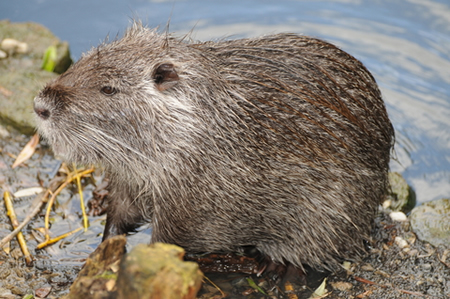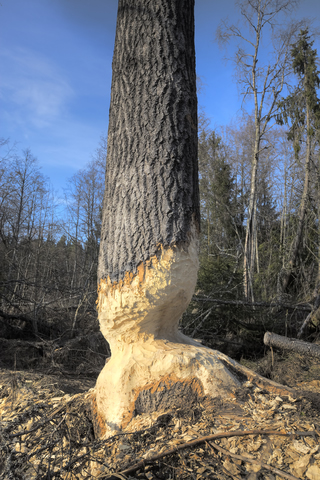Beaver introductions: some personal thoughts.
Tony Andrews, who is chairman of the South Esk Catchment Management Partnership and Chief Executive of the Atlantic Salmon Trust, welcomes the reintroduction of the European beaver, while asking that rural managers be permitted to control their populations when they threaten ecosystems or the rural economy. He argues that a balanced approach to management, guided by science, is the key to good decision making.
The European Beaver is an attractive rodent, about the size of a cocker spaniel. They are herbivorous, love water and usually build their lodges beside rivers or lochs, using trees which they have felled as building materials. Sometimes they build dams across slower flowing sections of small and medium size burns. Beaver activities can change ecosystems, in some instances damagingly so. Personally, I love beavers but only in the right context. For example thinking of context, hedgehogs, loveable as they are, really shouldn’t be present on islands where rare ground-nesting birds breed.
Beavers in mediaeval times were valuable for their skins, as food, and as a source of medicines. Much of Scotland was then natural forest or marshland. Today Scotland has less natural woodland than nearly every other country in Europe. Although the value of the animal is now different, beaver meat is a particularly healthy alternative to the processed offal of contentious origin we buy in our supermarkets. The food option is a real one if beaver populations expand sufficiently to require culling, as happens with red and roe deer.
Terrestrial ecologists argue that reintroducing beavers is good for biodiversity and natural regeneration of river catchments. But our countryside has changed from 400 years ago. Natural riparian woodlands are a rarity. Agriculture depends on well drained land. In our rivers migratory fish are returning from the ocean in massively reduced numbers, and they need every square metre of breeding space available. I acknowledge the ecological value of certain sites to reintroduce this long-extinct species, but I believe we need to have a clear exit plan if beavers are to take a place again as part of our natural fauna.
Beavers are secretive, twilight, animals, which suggests that not many people will see them. Charming though they undoubtedly are, they can be very destructive if populations expand into areas of the countryside where their tree-felling and dam building activities affect the local economy or fragile ecosystems.
Salmon stocks have declined by over 60% in the last forty years, and sea trout numbers are also under pressure. Threats to stocks will become serious if beavers damage spawning and nursery areas. Beaver ‘engineering’ activities in sub-catchments will obstruct access to spawning locations. They will also inhibit regeneration of the freshwater mussel, which depends on salmon and sea trout to re-populate the upper catchment.
Felling riparian trees on the banks of shallow tributaries will open up shaded areas to the heat of the summer sun. As summers get hotter and droughts more severe, water temperatures are likely to become lethal to young salmon, as has already happened in some rivers in France and Southern England. Riparian woodlands provide protection against high water temperatures.
Large numbers of migrating salmon and sea trout smolts will concentrate in the pools above beaver dams making them very vulnerable to predation. A river’s ability to regenerate its salmon and sea trout stocks is entirely dependent on the numbers of smolts that reach the sea. Beaver activities will reduce that output, which in the case of the South Esk could spell disaster for both species, not to mention the threatened freshwater mussel.
‘Accidentally’ introduced beaver families have already colonised the Dean Water, a tributary of the Isla in the Tay catchment. It is a short walk from the upper Dean to the Lemno Burn in the South Esk catchment. As a river already struggling to conserve its salmon and sea trout stocks, it is important that beavers are controlled and not permitted to damage a catchment whose biodiversity is already fragile.
Tony Andrews 23/3/13

